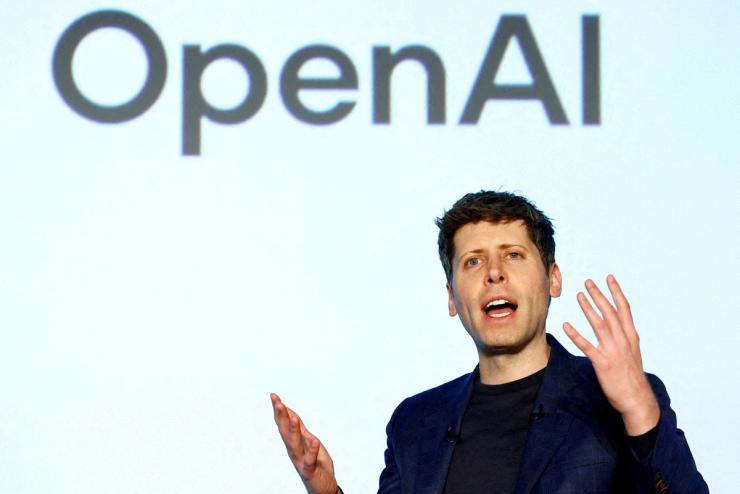The News
OpenAI released two powerful open models Tuesday that rival other free offerings like DeepSeek, Alibaba’s Qwen, and Meta’s Llama.
The new models, called gpt-oss 120b and gpt-oss 20b, are the first free, open versions the company has released since the ChatGPT era began, and they are capable enough to compete against some of its high-performing closed-source products, which are largely available by subscription.
The move comes as open models have grown increasingly popular. In January, China’s DeepSeek released its free R1 model, causing some investors to lose faith in the value of AI companies that charge users. In recent months, Alibaba’s Qwen family of models has seen wider adoption, enticing more businesses to employ them in AI tools.
Companies are often using a mixture of different AI models for various tasks, running open offerings for those with less complexity and paying companies like OpenAI for the most powerful products.
Open-source AI models are often referred to as “open weights” instead of “open source” because companies do not publicize the training data used to create them.
With the new models, OpenAI hopes to create a one-stop shop, where businesses can use its products locally and in the cloud. The company said the models would feel familiar to users who have experience with the closed-source ones.
“We expect people are going to really pick one provider that is able to give them everything, rather than wanting to slice and dice, and combine things in different ways,” said Greg Brockman, co-founder and chairman of OpenAI. “Fundamentally, we think this will be very good for our existing business.”
In this article:
Know More
OpenAI has been advocating for “democratic AI,” or models built with guardrails and safety measures that reflect western values, and has implored the US and other countries to help counter an effort by Chinese companies to take market share.
The US is still ahead on AI, but China is gaining ground by offering very capable models for free. Even though Chinese-made models can run on secure servers, some experts believe the software could theoretically pose a national security threat.
OpenAI’s new models could prove an enticing alternative to Chinese rivals. They are capable of chain-of-thought reasoning, the ability to break problems down into multiple steps and explore multiple approaches. They can also access the web, use tools, and control other software.
“We are excited for the world to be building on an open AI stack created in the United States, based on democratic values, available for free to all and for wide benefit,” OpenAI Co-founder and CEO Sam Altman said in a statement.
The company has also built safety measures into the new model to prevent misuse. For instance, it said its testers found it wouldn’t be helpful if malicious actors tried to use it to build a biological weapon.
Reed’s view
If you can’t beat ‘em, join ’em. Since OpenAI launched ChatGPT, small startups and companies as big as Meta have been bombarding the landscape with free AI models.
A lot of those are sufficient for the basic things companies want to do with AI. And while the vast majority of OpenAI’s revenue comes from consumers, it would no doubt like to beef up its enterprise business.
It makes no sense for OpenAI to cede the open weights part of that industry to other companies. By offering its own models, it can both keep customers inside its family of products, and benefit from improvements and new ideas shared by users.
It may be that it’s relatively inexpensive for OpenAI to develop open weight models just below the quality of its proprietary versions, especially if some of the massive investment can be repurposed for the free models.
“There’s a lot of capability that we’ve managed to pack into their size that is unlike something that people have seen,” Brockman said.
If it turns out these new, free models catch on and are more popular than many of the open models being used today, it could discourage companies like Alibaba, Meta, and DeepSeek to invest as much in their versions.
Room for Disagreement
OpenAI’s safety work on the model is unlikely to be the last word. As we’ve seen in the past, critics have argued it’s easier for criminals to get around safety measures than AI companies hope. Researcher Gary Marcus had this to say last year, after OpenAI released research suggesting its safety measures prevent a possible bioweapons attack: “I am here to tell you that OpenAI’s research, analyzed carefully, shows no such thing, and that there is plenty of reason to be concerned.”
Notable
- The success of DeepSeek was proof that open-source models were surpassing closed-source ones, because they benefited from open research, Meta’s AI chief said earlier this year.
- Going open-source could complicate OpenAI’s relationship with Microsoft, which has so far been the only beneficiary of the company’s AI models, The Verge’s Tom Warren noted. While the new OpenAI models are available on Microsoft Azure, they are also launching on services like Hugging Face and Ollama.


